In the peaceful land of Phu Long, formerly part of Binh Thuan province, where the Can and Cai rivers meet, a small village nestles by the water. Day by day, the fires in the kitchens are kept alive to preserve the old craft. The tradition of making banh hoi has lasted through generations, as enduring as the rhythm of life of the people on this white sand land.
Each delicate white thread of banh hoi is shaped by weathered hands, through patience and devotion devoted to a craft that has been carried through time.
Preserving the Traditional Craft
Before dawn, when the sky has yet to brighten, the morning mist drifts lightly over the old tile roofs and the firewood stoves in the small houses are already burning. Warm steam mingles with the faint scent of soaked rice, creating a sense of calm found only in villages where the craft has lived alongside kitchen smoke for generations.
In the Phu Thinh area of Phu Long, the banh hoi oven of Mr. Le Van Chuong’s family is lit consistently every day. On average, the family produces two hundred kilograms of banh hoi daily from the finest batches of rice without adding any additives. Every step is done by hand, slowly and carefully: selecting the rice, soaking it overnight, washing it clean, grinding it into fine flour, and pressing it into cakes. It may sound simple, but only those who have devoted their lives to the craft truly understand the subtlety of each step.
Each delicate thread of banh hoi is the culmination of the artisan’s effort, the warmth of the morning fire, and the love for the traditional craft of the homeland.
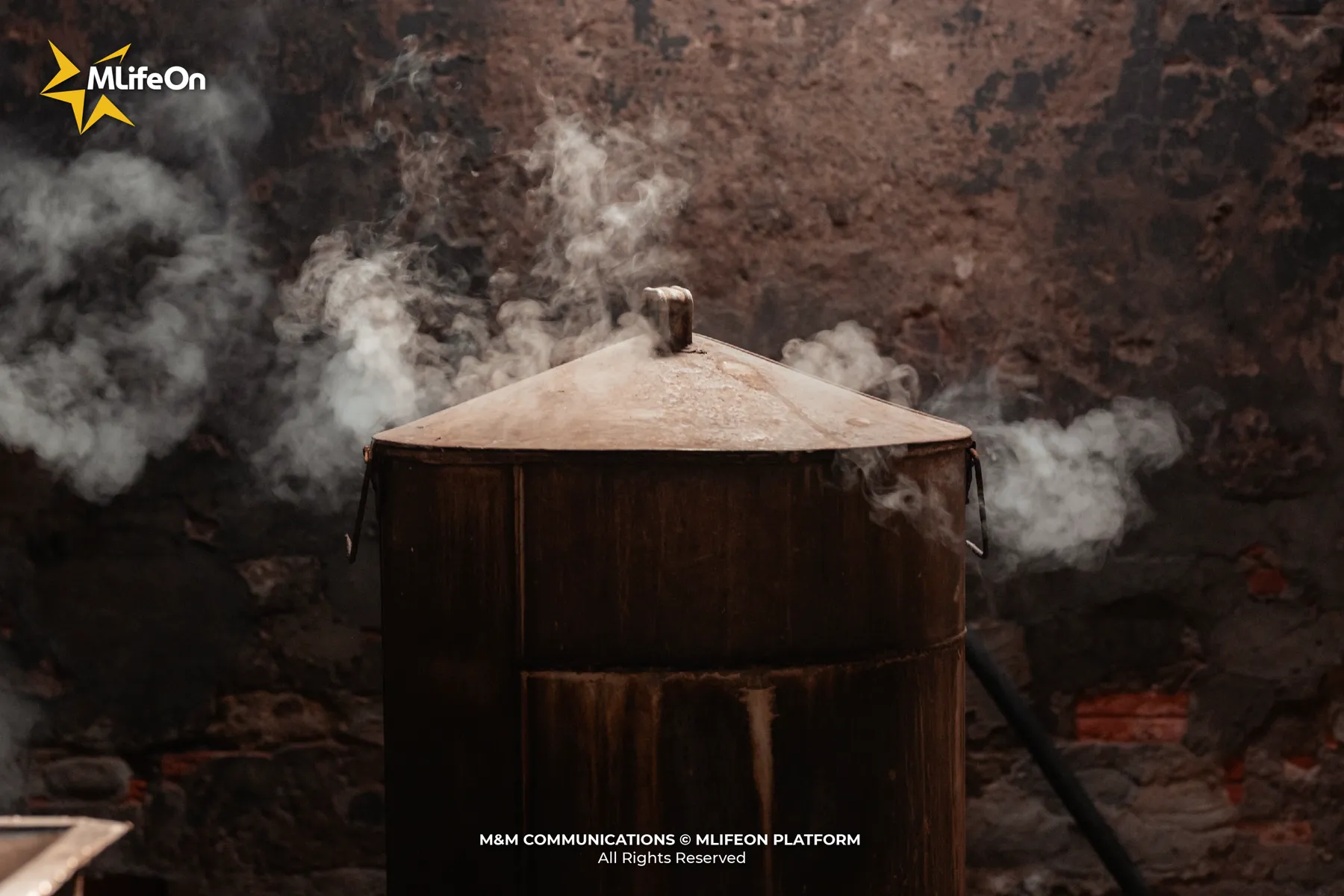
Warm firewood stove where the first batches of banh hoi are made.
A day in the banh hoi village of Phu Long
To create a fragrant batch of banh hoi, the artisan selects the purest white rice, soaks it overnight until soft, and then grinds it into fine flour. The flour is cooked, pressed into thin thread-like strands, and carefully spread on bamboo trays for steaming.
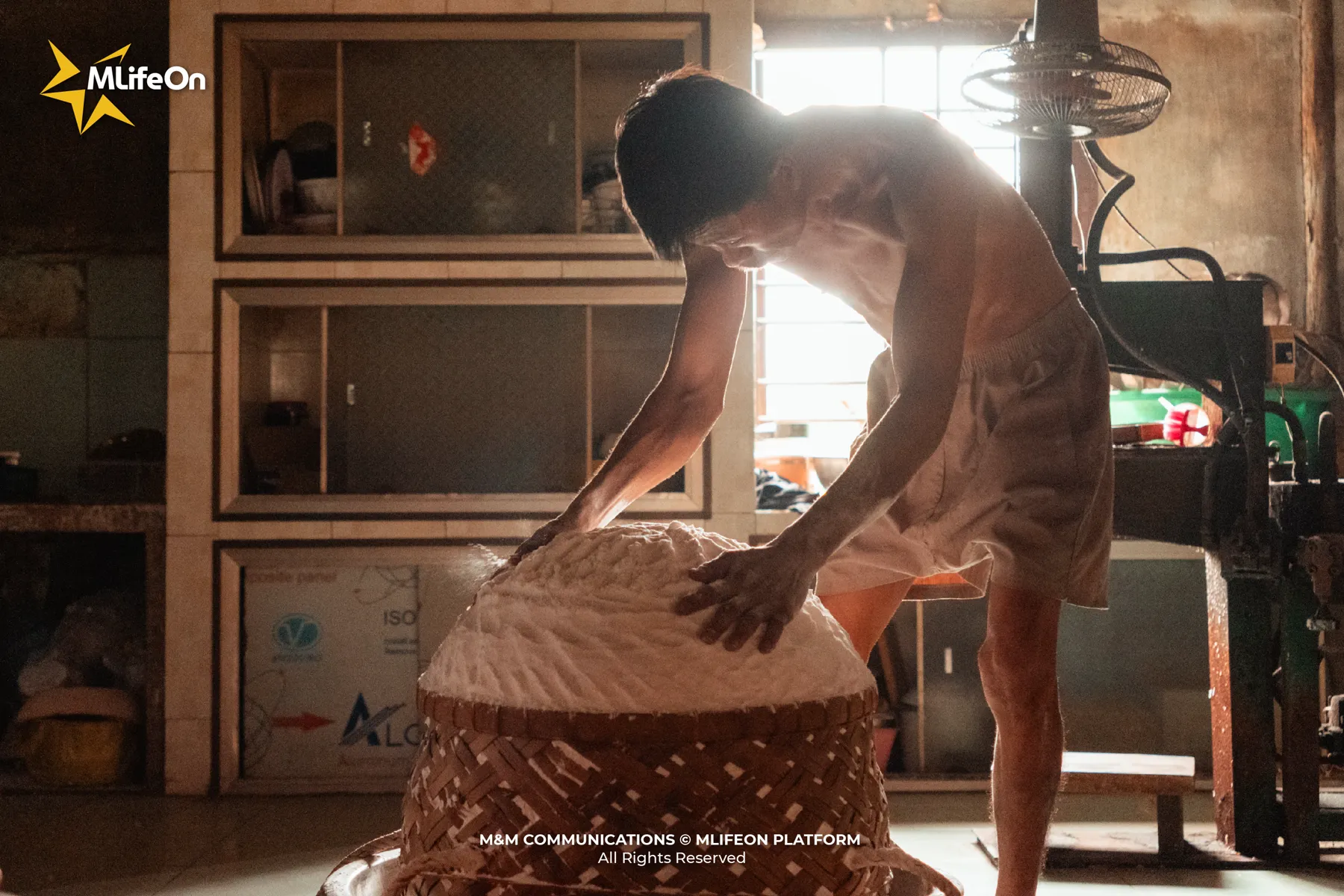
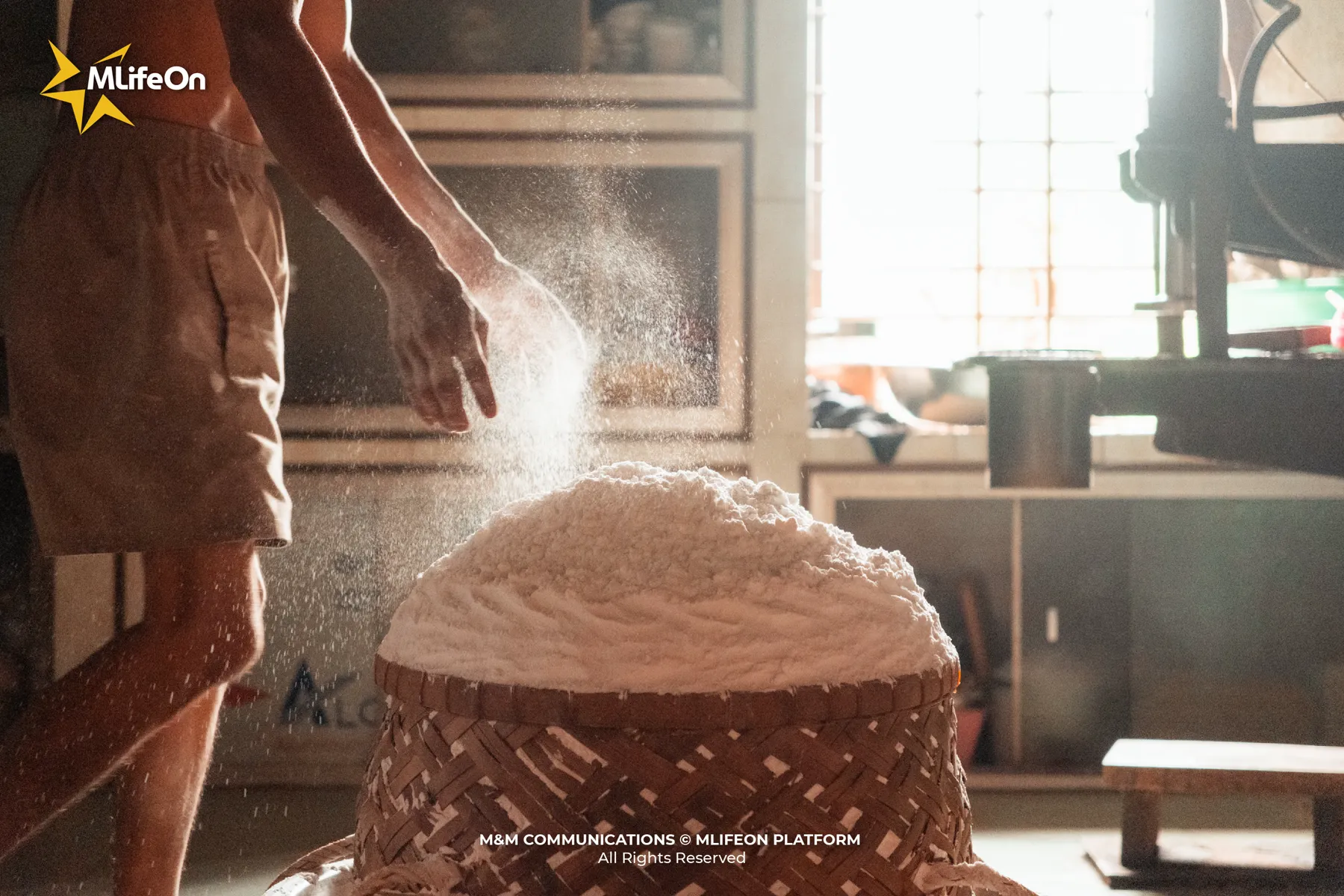
Rice ground finely, ready to be pressed into banh hoi strands.
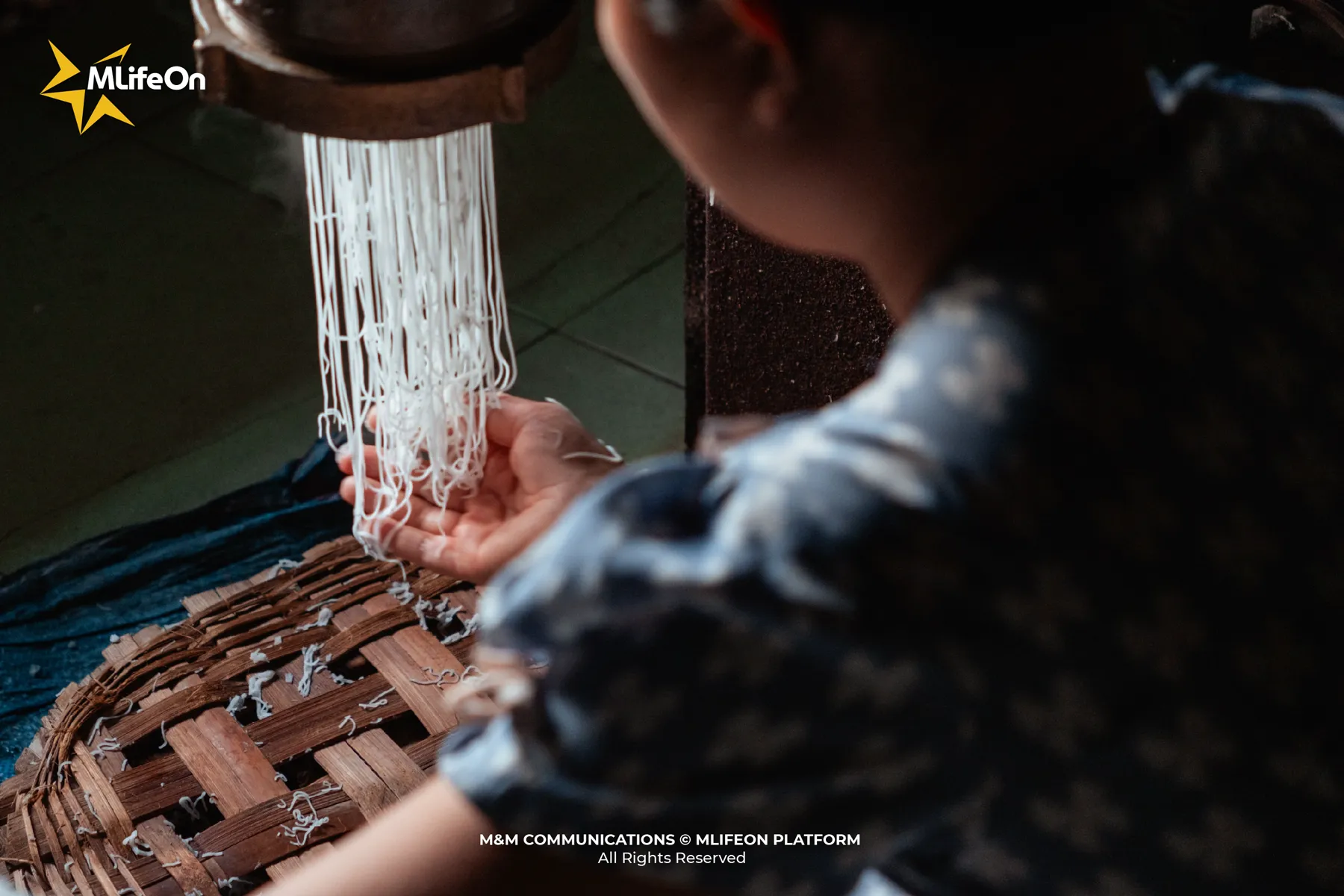
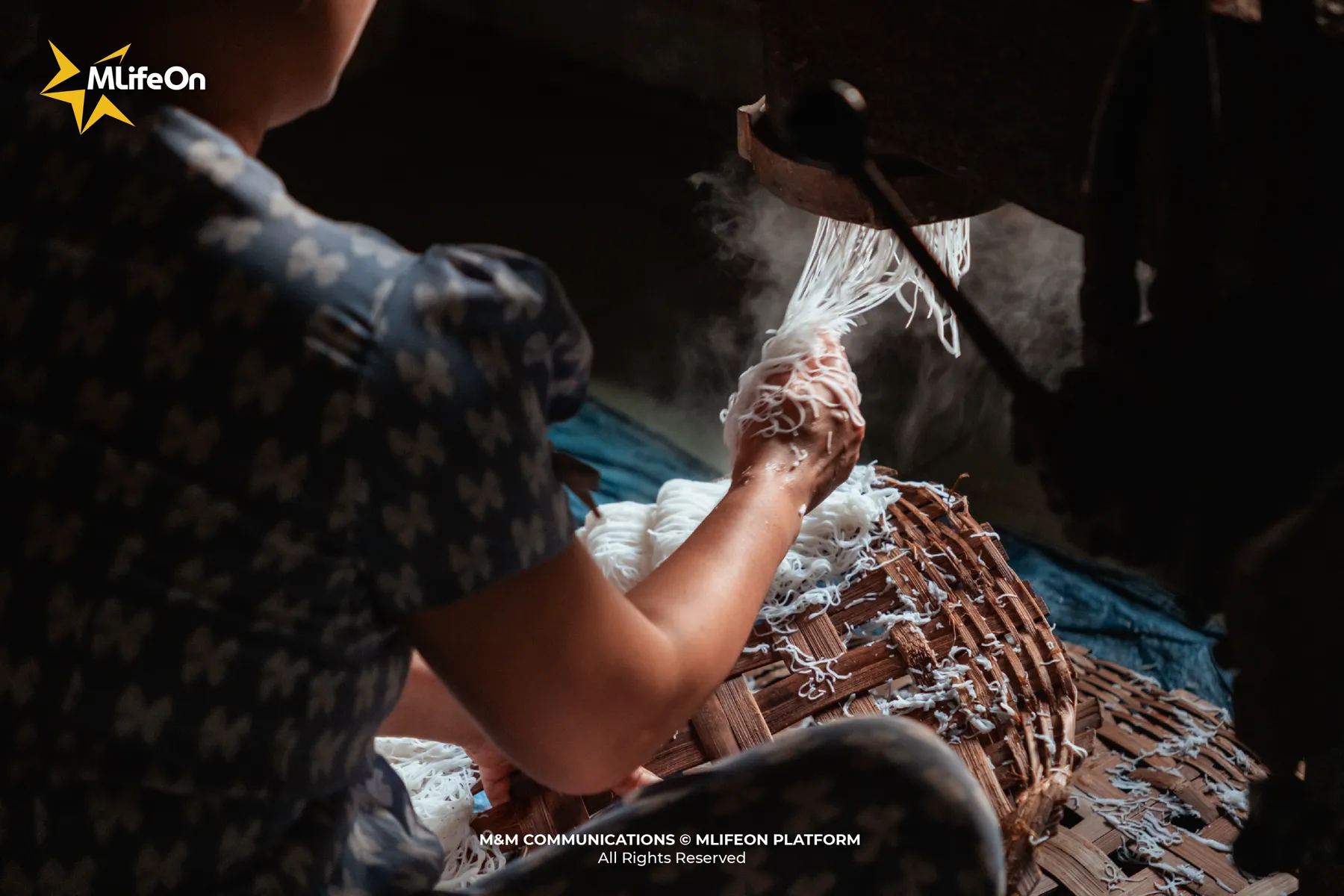
Thin white strands of banh hoi pressed from the soft fragrant dough.
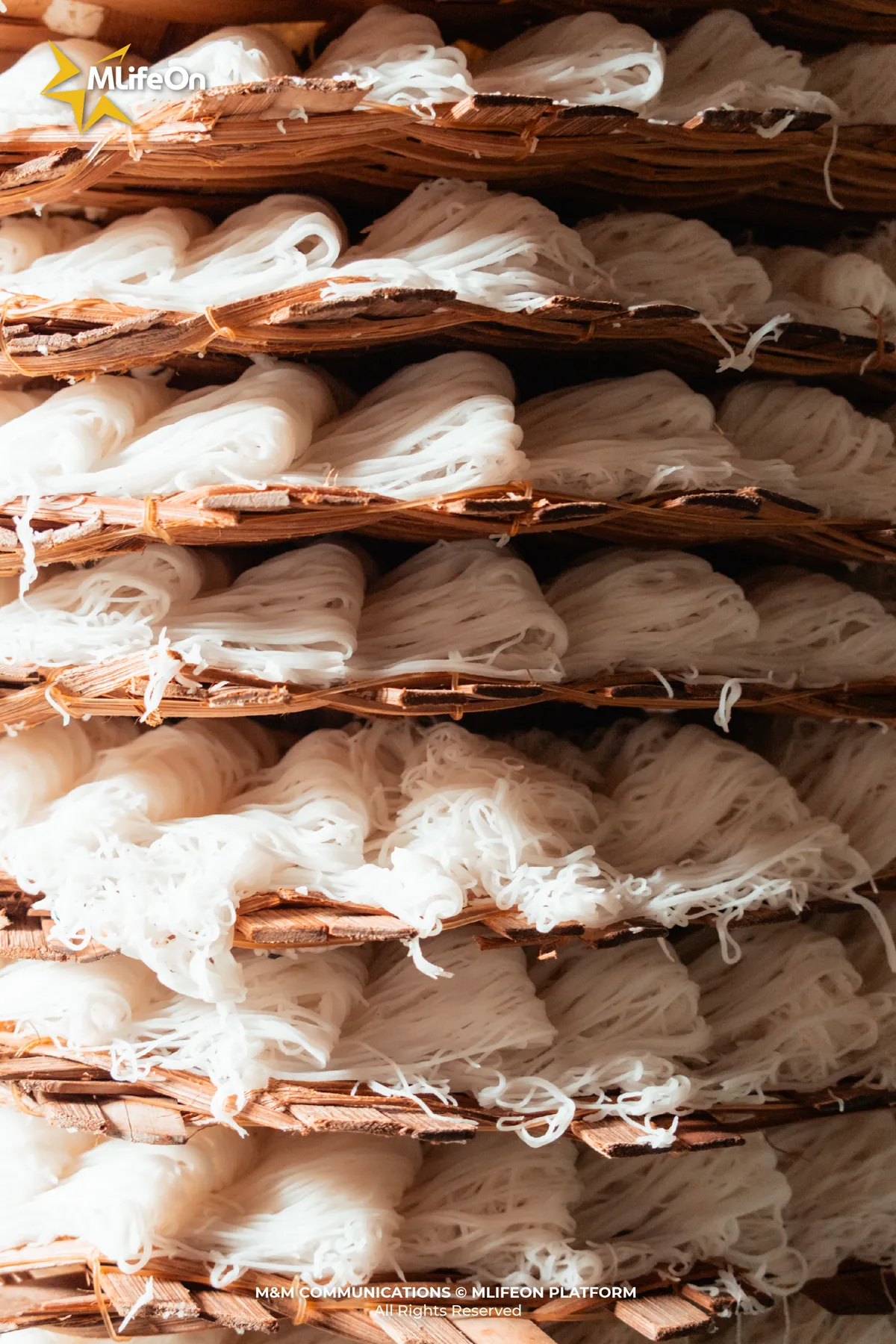
Trays of banh hoi neatly arranged, ready to be steamed over the wood fire.
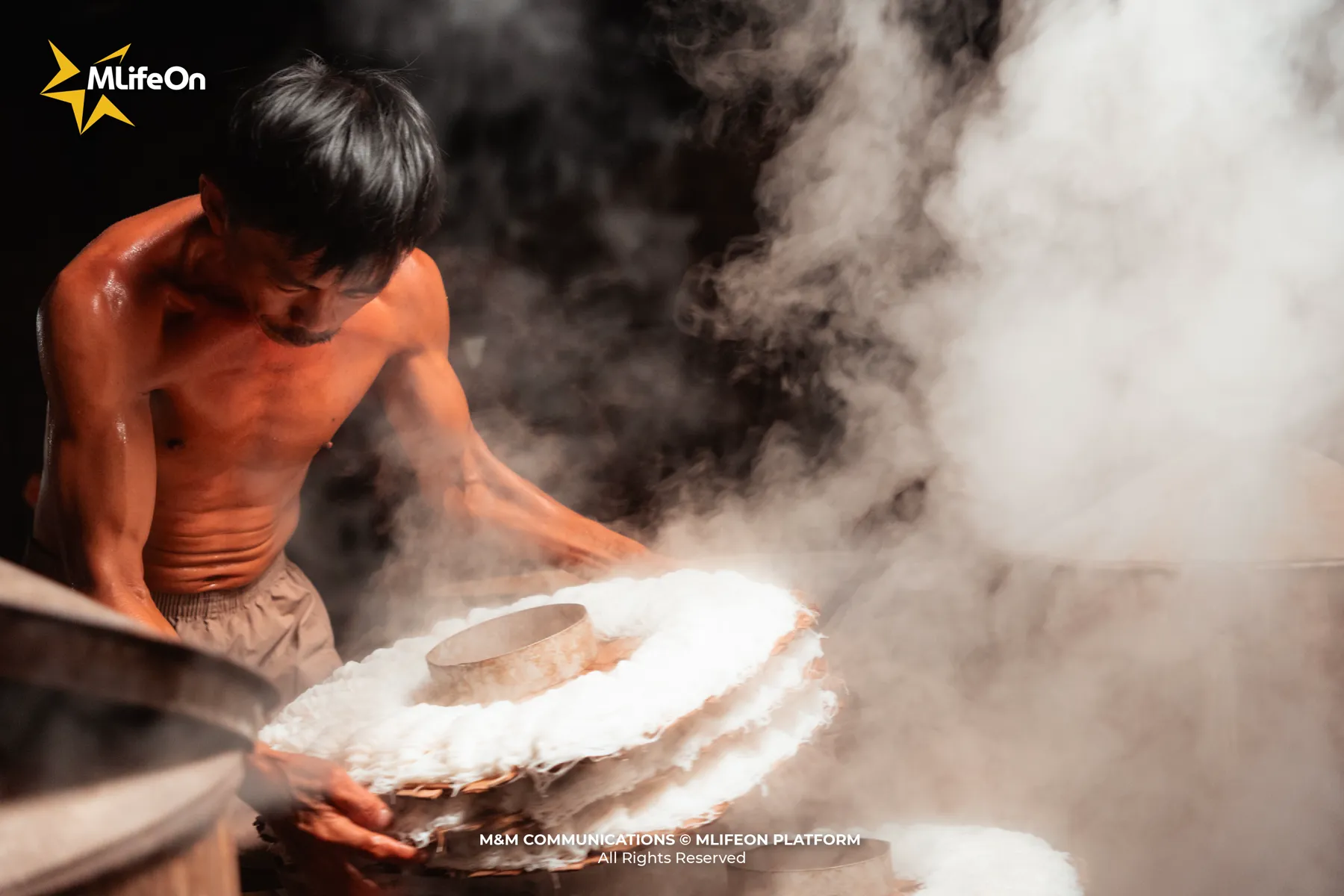
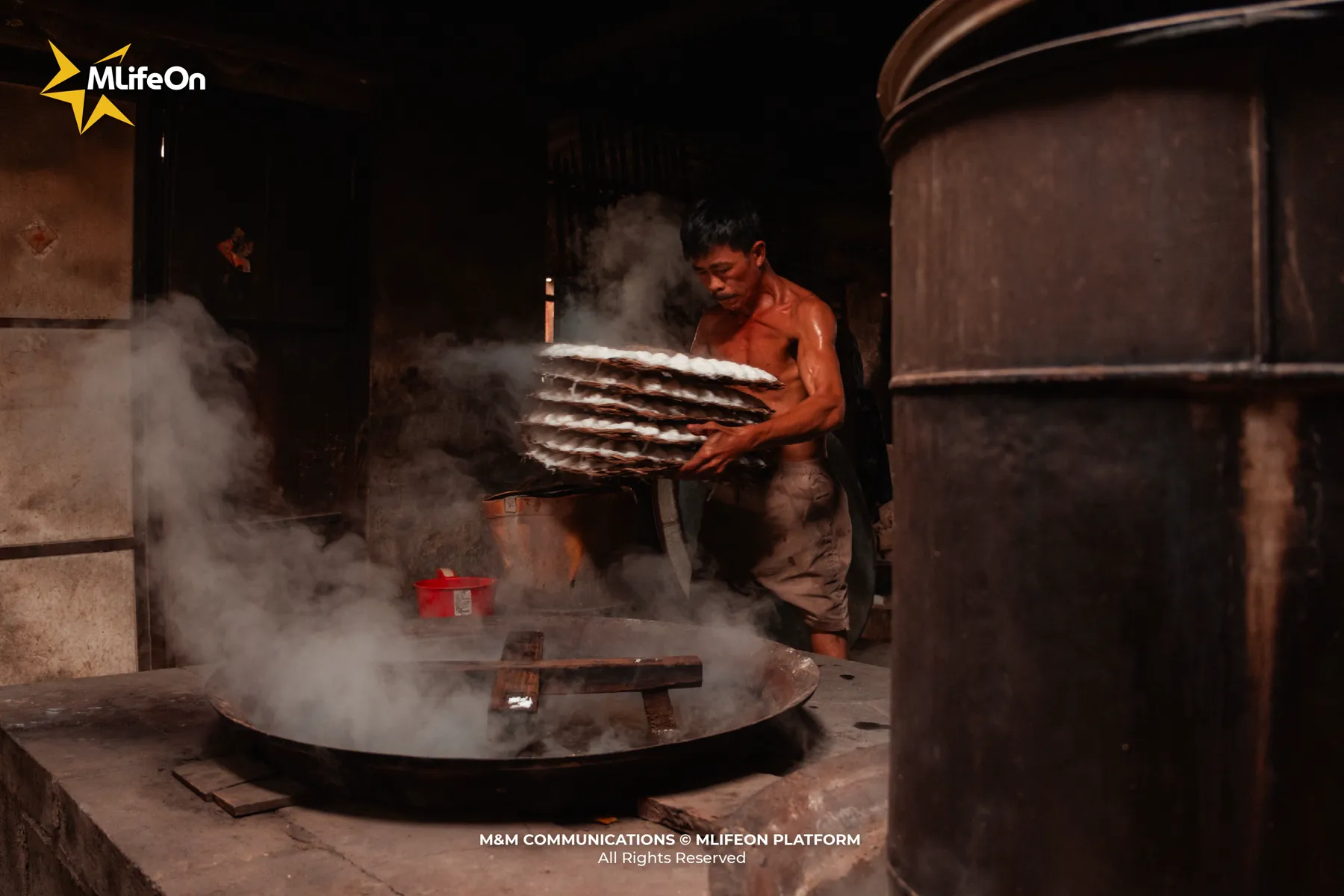
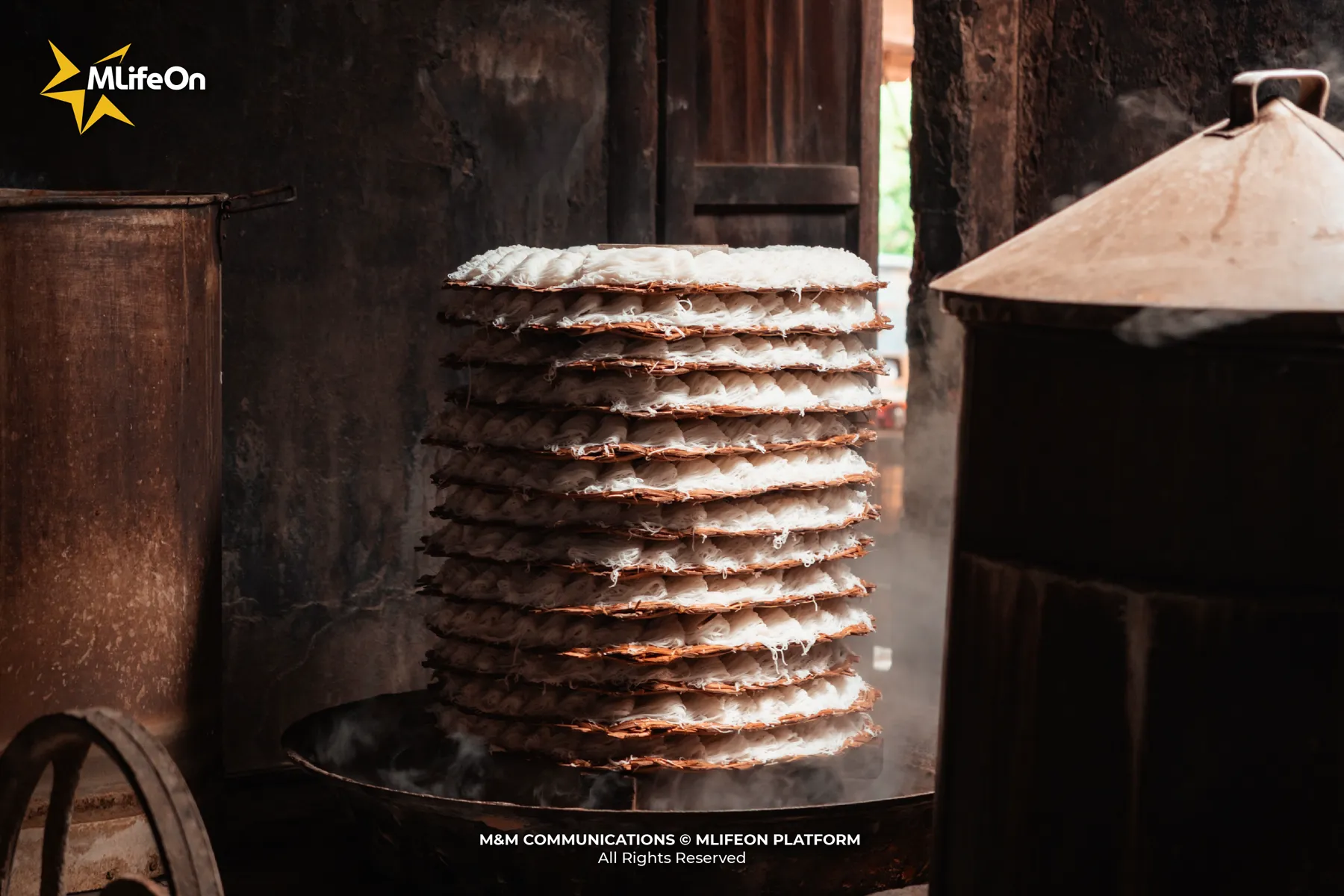
Steaming banh hoi in a kitchen filled with morning smoke.
Each time the lid is lifted, the rising steam carries the scent of cooked rice throughout the space. The banh hoi just steamed has a pale ivory color, soft and elastic, with a gentle aroma of fresh rice. The artisan must carefully manage the fire. If the fire is too strong, the banh hoi dries; if too low, it sticks. Amid the rising steam is absolute focus, skilled hands accustomed to heat and dough, and experience honed over years devoted to the craft.
Even though machines can now replace some of the steps, the people of Phu Long still prefer the manual method. They believe that only human hands can truly feel the elasticity of the dough and know when the banh hoi is perfectly cooked and soft enough to be called authentic “banh hoi Phu Long”
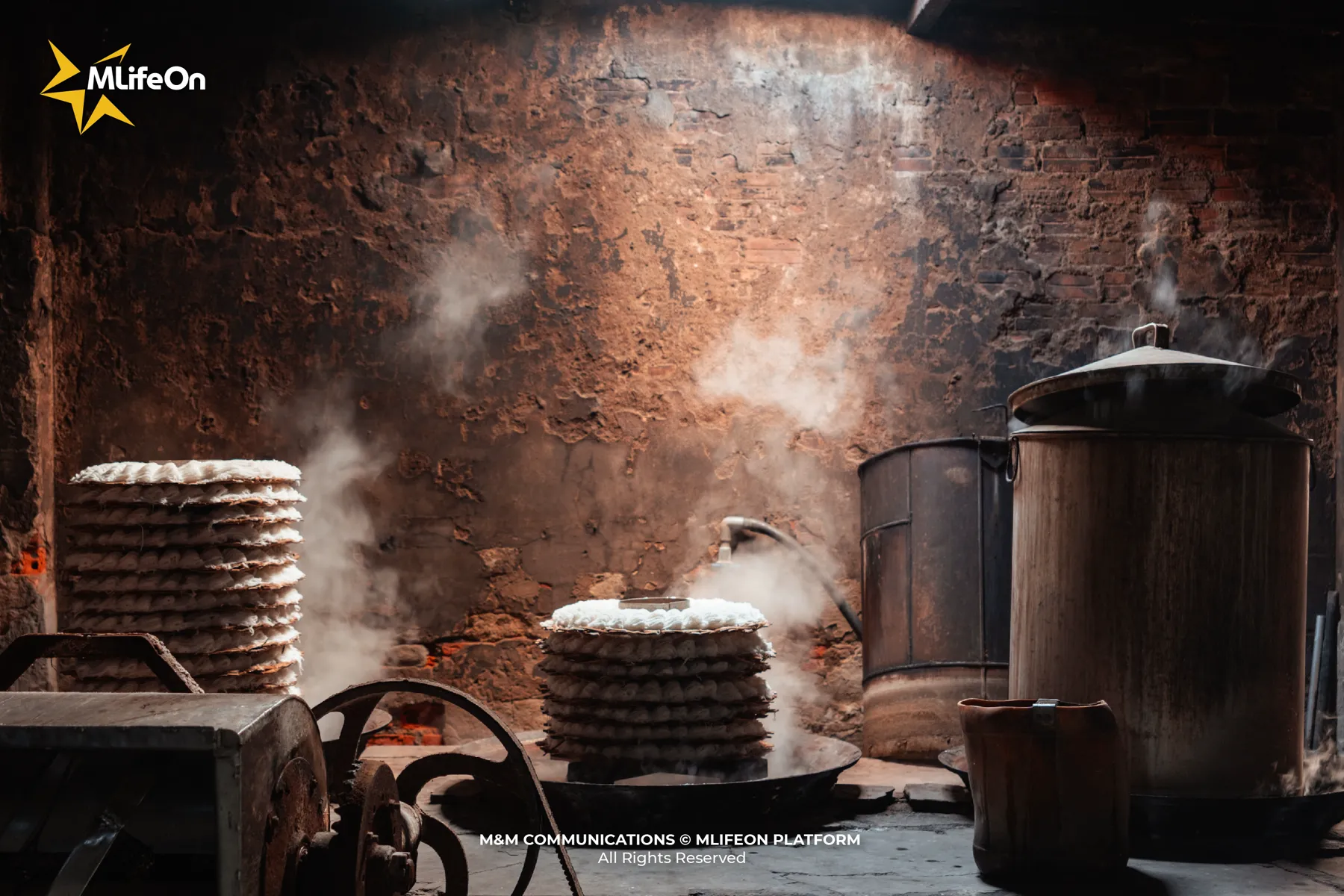
The flavors of home in the morning kitchen
The morning smoke in Phu Long carries a beauty all its own. Through the thin haze, sunlight slips through the small window, casting light on the trays of delicate white banh hoi and the sun-kissed faces of the artisans. Everything is simple yet beautiful, making anyone with a camera want to linger a little longer to capture the moment.
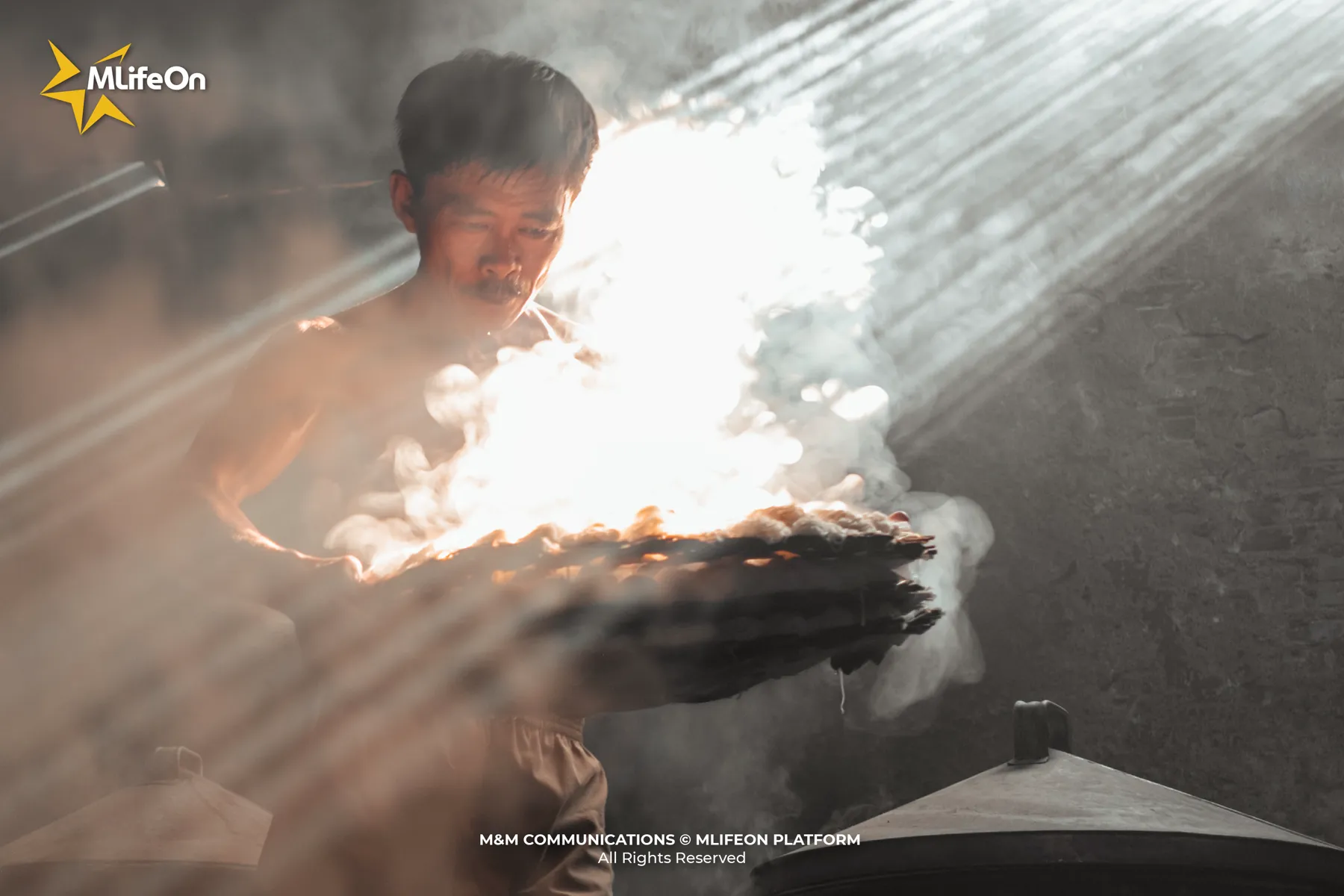
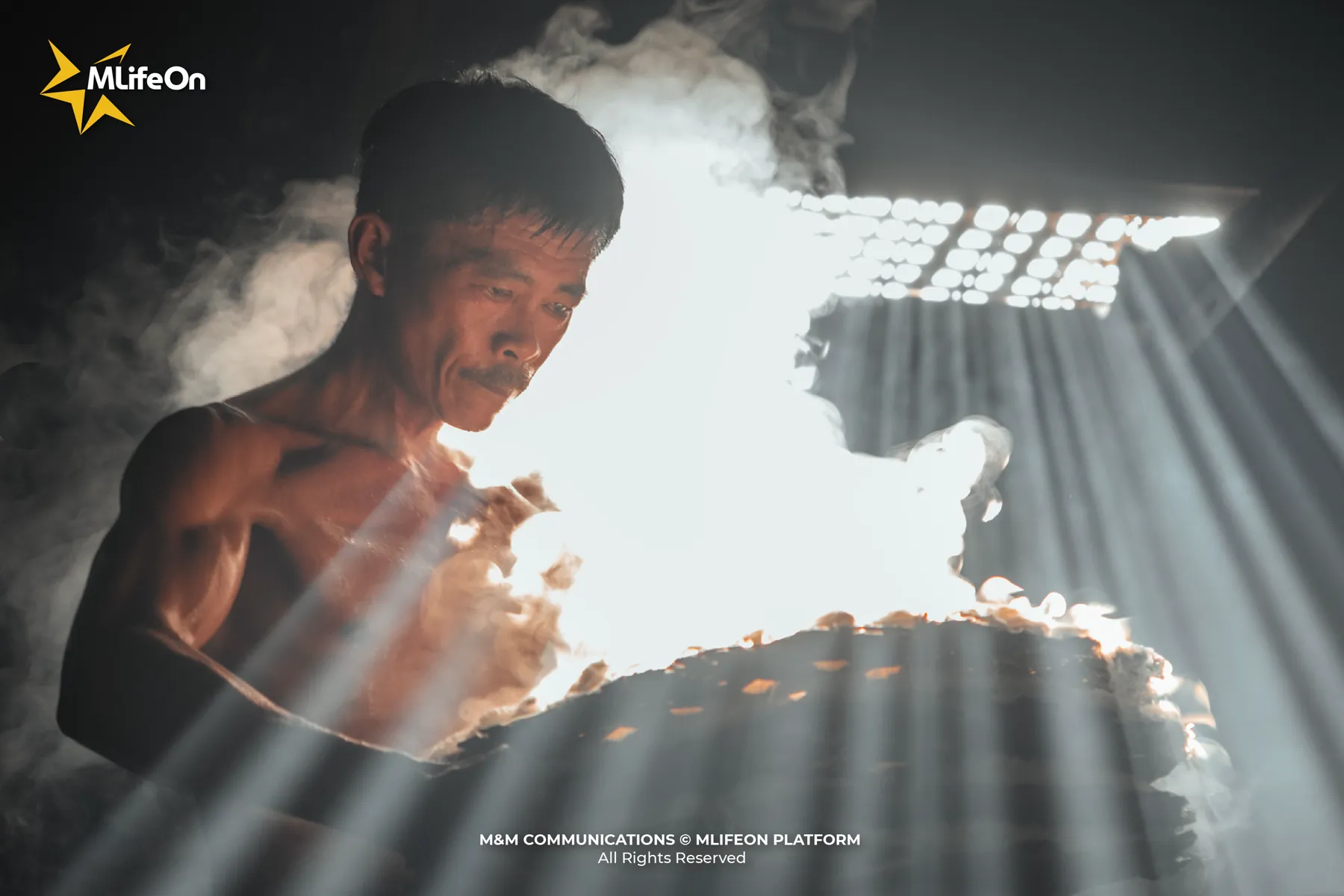
The oven in Mr. Chuong’s family kitchen is no longer just a place to preserve the craft, but also a destination for those who appreciate the quiet beauty of daily life. Visitors can press the dough with their own hands, steam the banh hoi, and sit down to enjoy a warm batch straight from the stove.
Banh hoi in Phu Long is at its best when eaten with crispy roasted pork, drizzled with a little scallion oil, and sprinkled with golden fried shallots. In coastal areas, people enjoy it with grilled fish, steamed shrimp, or pork offal, accompanied by a small bowl of sweet and sour fish sauce with garlic and chili. In some places, the banh hoi is rolled with fresh herbs and cucumber, lightly dipped to taste. Simple yet complete, these flavors linger in the memories of those far from home.
Conclusion
Even as life around changes, the oven still burns each morning. The scent of rice, the rising steam, and the familiar conversations linger in the kitchen, simple yet enough to show that a traditional craft is still being preserved.
—--
CREDIT:
- Photography: Tran Le Minh Quan
- Content: Vy Vy
- Design: Trung Huynh





















